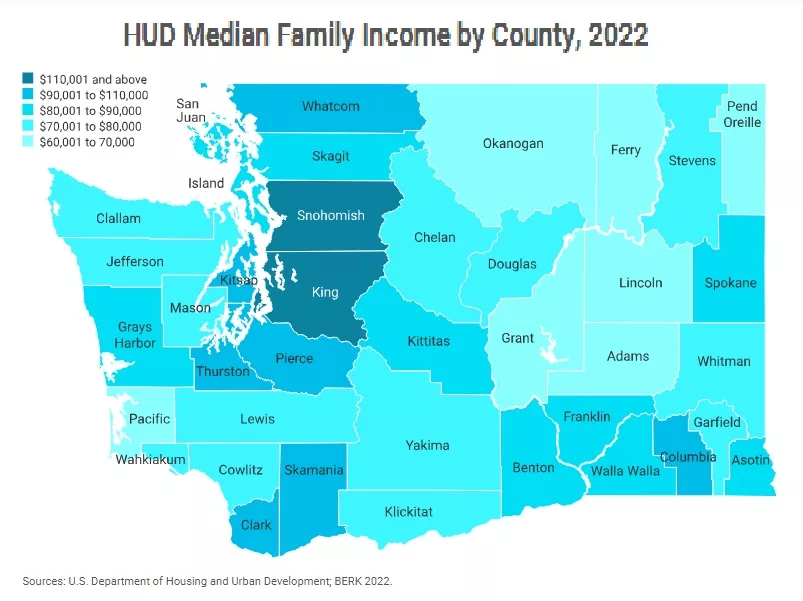
OLYMPIA, WA—The lack of affordable housing options has reached critical levels in communities throughout Washington, according to the recently released Affordable Housing Advisory Board Five-Year Housing Advisory Plan. The AHAB report highlights the need for action, detailing that the state must add over a million new homes within the next 20 years to meet current needs and accommodate population growth. This widely quoted estimate of housing needs was reported last year.
The affordability of housing depends on two factors: the cost of the housing and the household’s income.
The U.S. Department of Housing and Urban Development considers a household “cost-burdened” if it spends more than 30% of its income on housing costs, including utilities. Cost-burdened households have less income for necessities like food, transportation, education, and health care. The cost burden is also an indicator of potential housing insecurity
Between 2015 and 2021, Asotin County saw a moderate improvement in the number of households experiencing a housing cost burden—down 4% from 31% to 27%, while Whitman County saw very little change—from 45% to 44%. There were no reports for Columbia and Garfield counties due to high margins of error in the source data.
The Housing Advisory Plan emphasizes that nearly half of the new homes required in the coming decades must be affordable to households earning less than 50% of the area’s median family income. This shortage of affordable housing contributes to homelessness, housing instability, and increasing costs for low- and moderate-income families. The Housing Advisory Plan provides a path for understanding the affordable housing crisis and details recommendations for removing barriers to building more affordable homes.
“Washington is among many states that are not producing an adequate and affordable supply of housing for our growing population,” according to Paul Trautman, Affordable Housing Advisory Board Chair. “The housing challenges highlighted in this report will take local, state, and federal action to build the more than one million housing units needed across Washington.”
“This report describes the housing challenges resulting from investments in affordable housing not keeping pace with Washington’s dynamic growth,” says Tedd Kelleher, Washington State Department of Commerce Housing Policy Manager. “Implementing the recommendations in this report at the necessary scale is critical to meeting the housing needs of our state.”
From the Washington Department of Commerce:
County profiles provide local insights
Included in AHAB’s report are housing profiles for each of Washington’s counties. These profiles are designed to support local planning and provide an understanding of housing conditions, trends, and projected needs. By examining a county’s specific challenges and resources, policymakers and local officials can better address unique needs of their communities.
Key report recommendations
The plan outlines over 50 recommendations to help address barriers to affordable housing production, including:
- increasing funding support,
- streamlining administrative and regulatory processes,
- supporting construction job training,
- promoting new types of housing, and
- supporting homeownership for low- and moderate-income families.
Additionally, it suggests steps to prevent the loss of affordable housing and protect people living in manufactured home communities. The recommendations focus on actions that the Washington State Legislature and the Department of Commerce can take to address the affordable housing shortage.
Personal Stories Highlight the Impact
The report includes personal stories from residents who face housing insecurity. These stories were collected through surveys and listening sessions conducted by the Washington Low-Income Housing Alliance. These stories bring a human perspective to the data, illustrating the real-life challenges and struggles of those impacted by the affordable housing crisis.
Get the full report (PDF)

